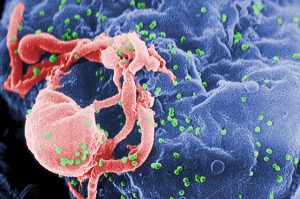Type 2 Diabetes
Epidemiologist Nick Wareham on the discovery of insulin, clinical diagnostic tests for diabetes, and the thrif...
What is the procedure for donating embryonic stem cells? What are the main applications of cells derived from embryos? Professor of Genetics and Embryology, Maya Mitalipova, answers the most intriguing questions about human stem cells.
Embryonic stem cells have been known for nearly 30 years. First embryonic stem cells were derived in a mouse, and it was done in 1981 by two groups of researchers – Evan and Kaufman and Gail R. Martin. They derived it from a mouse’s embryos. So usually, in a mammalian system, embryonic stem cells are derived from pre-implantation embryos, which consist of (the name of the stage of the embryo) a blastocyst.
A blastocyst is a spherical cell, it’s actually not a cell, it’s the embryo that has about a hundred and twenty cells inside. So the outer layer of the blastocyst makes a placenta, which after the implantation feeds the embryo. And then there are actual cells called inner cell mass, from which, actually, the whole embryo develops. And these inner cell mass before implantation you can actually extract from a mouse or any other mammalian blastocyst. You can actually derive them and maintain them in a culture. The whole process has been quite technically challenging, and especially it was challenging for other mammalian species. And I think, it’s quite revolutionized the biology itself, because by using these embryonic stem cells the biologists could answer lots of questions, genetic questions.
Embryonic stem cells in a mouse were derived 30 years ago, and it’s been used as a mouse model of human diseases, mostly. So, embryonic stem cells, since they were derived in culture, can make indefinite cell numbers in vitro. They can change in in vitro culture, so the changes can be genetic, they can acquire chromosomal abnormalities, point mutations. So those are artifacts of in vitro cultures. There are two types of embryonic stem cells. For example, there are embryonic carcinoma cells, these are the first that were actually derived by the scientist. Peter Andrews in the UK has characterized these cell very, very detailed. Embryonic carcinoma cells compared to embryonic stem cells — it comes from the embryo. But the difference between them is that embryonic carcinoma cells are actually derived from embryonic tumors.

Epidemiologist Nick Wareham on the discovery of insulin, clinical diagnostic tests for diabetes, and the thrif...

Molecular Biologist Greg Towers on how HIV is transmitted, the possibilities of an HIV vaccine, and how it hel...

Geographer Mathias Disney on carbonate deposits in the ocean, how wildfires release the carbon in the atmosphe...